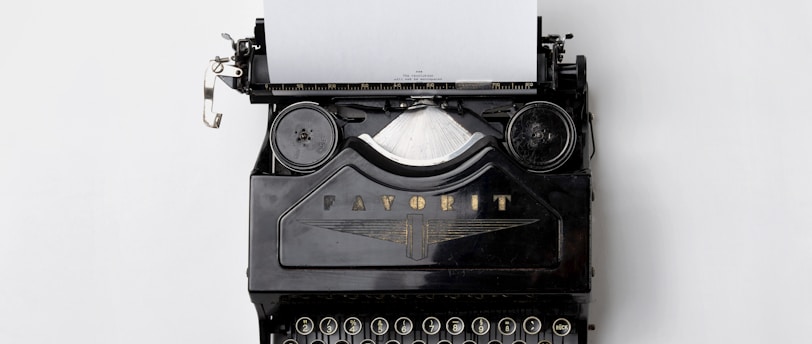Objects That Leave Traces: Stories Told by Used Items


The Story Behind Everyday Objects
Everyday objects, often taken for granted, possess deep emotional and historical significance that can reflect the lives of their owners. Over time, these items accumulate stories that offer a glimpse into personal experiences, societal changes, and even cultural shifts. Worn-out shoes, for instance, can embody countless journeys taken by their owners, each crease and scuff marking a step in a life well-lived. The narrative of these shoes may reveal not only the physical paths traversed but also the emotional terrain covered—joy, sorrow, discovery, and growth.
Similarly, second-hand books serve as vessels of shared knowledge and exploration. Each text, marked by the annotations and dog-eared pages of its previous readers, tells a story of its own. These markings can provide insight into the thoughts and emotions that resonated with past readers, creating a unique bond between the book and its new owner. One might find themselves transported into the heart of the narrative as they reflect on the passages that spoke to someone else's life, bridging gaps across generations.
Vintage furniture pieces also carry their own narratives. A well-loved armchair, with its fabric worn thin and an imprint of its occupant still visible, speaks to the countless moments of comfort and conversation it has fostered. Each scratch on the surface of a wooden table tells of family gatherings and shared meals, rooting the object firmly in the fabric of memory and experience. These stories encapsulate the essence of the daily lives they witnessed, contributing to a layered history that enriches our understanding of human connection.
In these reflections, everyday objects transform into chronicles of personal history, striking a balance between the mundane and the meaningful. They intertwine with our past, emphasizing that even the simplest items can serve as powerful reminders of our journeys.
The Psychology of Collecting: Why We Hold Onto What We Do
Collection as a psychological phenomenon can be traced back throughout human history, reflecting deep-seated emotions and personal narratives. Individuals often collect items that resonate with them personally, forming strong emotional attachments based on experiences, memories, or significant life milestones. These items serve as tangible connections to past events, encapsulating both joyful and bittersweet memories. For many, the act of collecting transcends mere possession; it becomes a means to construct identity and narrate one’s life story.
Nostalgia plays a crucial role in our relationship with collected items. This emotional longing for the past can drive individuals to keep objects that embody specific time periods or relationships. For example, a childhood toy may evoke a sense of security and innocence, making it difficult for a person to dispose of it, despite its lack of functional purpose. The comforting presence of these items can help individuals navigate challenging times, providing solace and a sense of continuity amid life’s uncertainties.
Research in psychology suggests that collecting behaviors can also fulfill psychological needs, such as the need for autonomy, competence, and social connection. Collectors often find a community among like-minded individuals, developing relationships centered around shared interests. This social aspect enhances the appeal of objects, as they not only represent personal memories but also become part of a broader narrative that fosters bonding and connection.
Interestingly, the process of collecting reveals much about our human nature. We often cling to items that signify personal milestones, relationships, or experiences, even if their utility is long gone. Analyzing these behaviors sheds light on the emotional attachments we cultivate over time and underscores why certain objects find their way into our lives and hearts. Understanding the psychology behind these attachments offers valuable insights into our motivations and the human experience itself.
Tracing the Journey: From Owner to Owner
The narrative journey of used items is often a rich tapestry woven with the stories of each owner. Every item carries traces of its past, embodying the memories and emotions associated with previous possessors. These connections are particularly evident in objects that change hands frequently, from thrift store finds to cherished family heirlooms. Each transfer of ownership adds a layer of depth to the item’s history, transforming it into a vessel for personal and communal experiences.
Consider the tale of a vintage leather jacket discovered in a thrift shop. As it transitions from the original owner to a series of subsequent wearers, the jacket absorbs the essence of each individual. The first owner may have worn it during significant life moments, attributing it with stories of love, loss, or triumph. The second owner might use it as a statement piece at social gatherings, adding tales of laughter and camaraderie. Each experience grants the item its unique identity, reflecting the diverse lives intertwined with its fabric.
Heirlooms experience a similar phenomenon, as they are often passed down through generations. A grandmother's brooch may evoke memories of family gatherings, representing love and tradition. When it reaches a granddaughter's hands, she may incorporate it into her own life, weaving new narratives of personal significance. Such objects serve as emotional bridges, linking past and present owners while showcasing the evolving stories transcending time and space.
Furthermore, shared items among friends or family members illustrate the connections built through everyday usage. Kitchen utensils or board games exchanged between households become symbols of shared experiences. These items thread together the lives of those who use them, highlighting how the journey of each object enriches its value beyond materialistic significance. Thus, understanding how used items traverse from one owner to another is crucial in appreciating the broader social narratives they encapsulate.
Giving New Life: The Art of Repurposing and Upcycling
In a world increasingly focused on sustainability, the art of repurposing and upcycling has emerged as a creative solution to combat waste. Many individuals and artists are finding innovative ways to breathe new life into used items, transforming what might otherwise be discarded into functional and aesthetically pleasing objects. This movement not only encourages creativity but also serves an environmental purpose, as it reduces the amount of waste that ends up in landfills.
Repurposing involves taking an item and giving it a new function, thereby extending its life and minimizing resource consumption. For instance, old wooden pallets can be turned into rustic furniture, while glass jars may serve as trendy storage containers or decorative pieces. Such creative adaptations often highlight the unique character of these items, allowing them to tell new stories while preserving the essence of their previous lives.
Upcycling takes this concept further by enhancing the original item, elevating its value through artistic craftsmanship. Artists around the globe have embraced this practice, utilizing materials that many would consider refuse to create stunning works of art. For example, discarded fabric can be transformed into quilts or artwork, while old bicycles might find new purpose as garden decorations or functional furniture. These projects often serve as conversations starters, inviting the audience to reflect on the journeys of these materials.
The potential for repurposing is not confined to artists and crafters; everyday individuals can participate in this movement by rethinking the disposal of household items. By adopting a mindset that values second chances, we can collectively contribute to a more sustainable future. Each transformed object carries a history and a narrative, reminding us of the importance of creativity in giving new life to what was once seen as obsolete. Ultimately, the art of repurposing and upcycling not only enhances our environment but also enriches our lives with unique artifacts that hold personal meaning.
